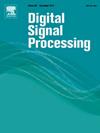Adaptive splitting mean online expectation-maximization method-based moving object localization
IF 2.9
3区 工程技术
Q2 ENGINEERING, ELECTRICAL & ELECTRONIC
引用次数: 0
Abstract
This paper introduces positioning techniques for estimating the location of an emitter using range data affected by outliers. In indoor and densely populated metropolitan environments, the presence of non-line-of-sight (NLOS) signals can significantly degrade estimation performance. To mitigate the adverse effects of NLOS signals, robust localization methods are employed. The proposed technique, referred to as the splitting mean (SM) online expectation-maximization (EM)-based two-step weighted least squares (TSWLS) method, is developed from a Bayesian perspective, specifically utilizing the linear minimum mean squared error (LMMSE) criterion. A key element influencing the performance of the SM algorithm is the smoothing factor. Unlike traditional SM methods that use a fixed smoothing factor, the proposed adaptive splitting mean (ASM) bias estimation method dynamically adjusts this factor. Additionally, a theoretical analysis of the mean squared error (MSE) for the proposed measurement bias estimation algorithms is conducted, demonstrating close alignment with simulation results. Simulations further reveal that the proposed method outperforms existing state-of-the-art techniques in localization accuracy across various NLOS bias distributions, including Gaussian, uniform, and exponential distributions.
求助全文
约1分钟内获得全文
求助全文
来源期刊

Digital Signal Processing
工程技术-工程:电子与电气
CiteScore
5.30
自引率
17.20%
发文量
435
审稿时长
66 days
期刊介绍:
Digital Signal Processing: A Review Journal is one of the oldest and most established journals in the field of signal processing yet it aims to be the most innovative. The Journal invites top quality research articles at the frontiers of research in all aspects of signal processing. Our objective is to provide a platform for the publication of ground-breaking research in signal processing with both academic and industrial appeal.
The journal has a special emphasis on statistical signal processing methodology such as Bayesian signal processing, and encourages articles on emerging applications of signal processing such as:
• big data• machine learning• internet of things• information security• systems biology and computational biology,• financial time series analysis,• autonomous vehicles,• quantum computing,• neuromorphic engineering,• human-computer interaction and intelligent user interfaces,• environmental signal processing,• geophysical signal processing including seismic signal processing,• chemioinformatics and bioinformatics,• audio, visual and performance arts,• disaster management and prevention,• renewable energy,
 求助内容:
求助内容: 应助结果提醒方式:
应助结果提醒方式:


